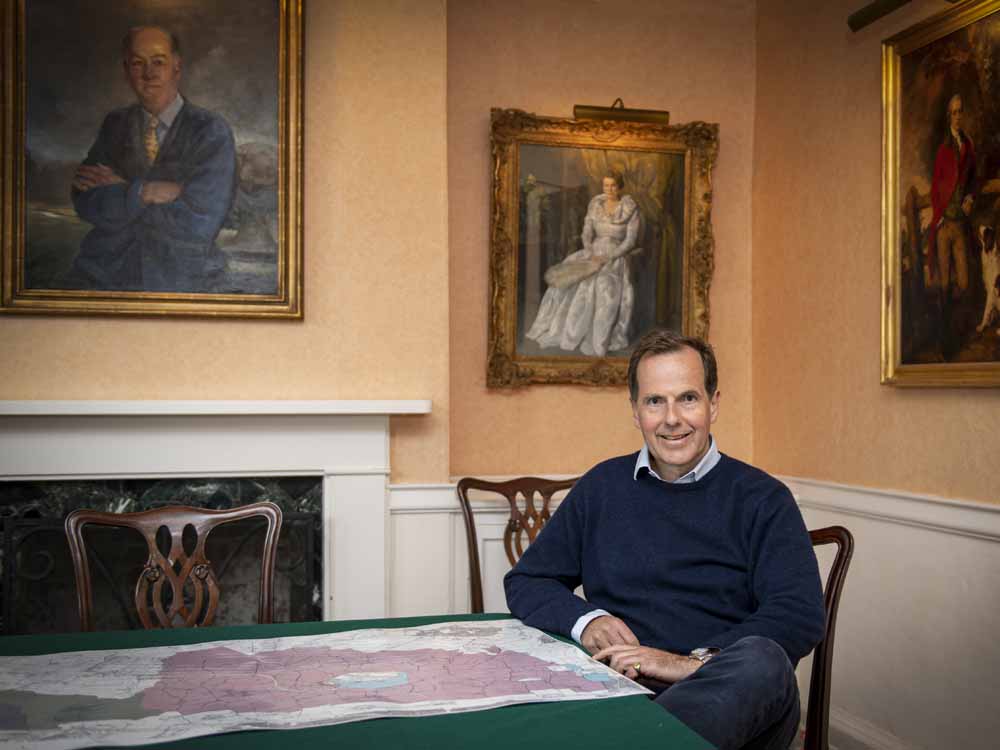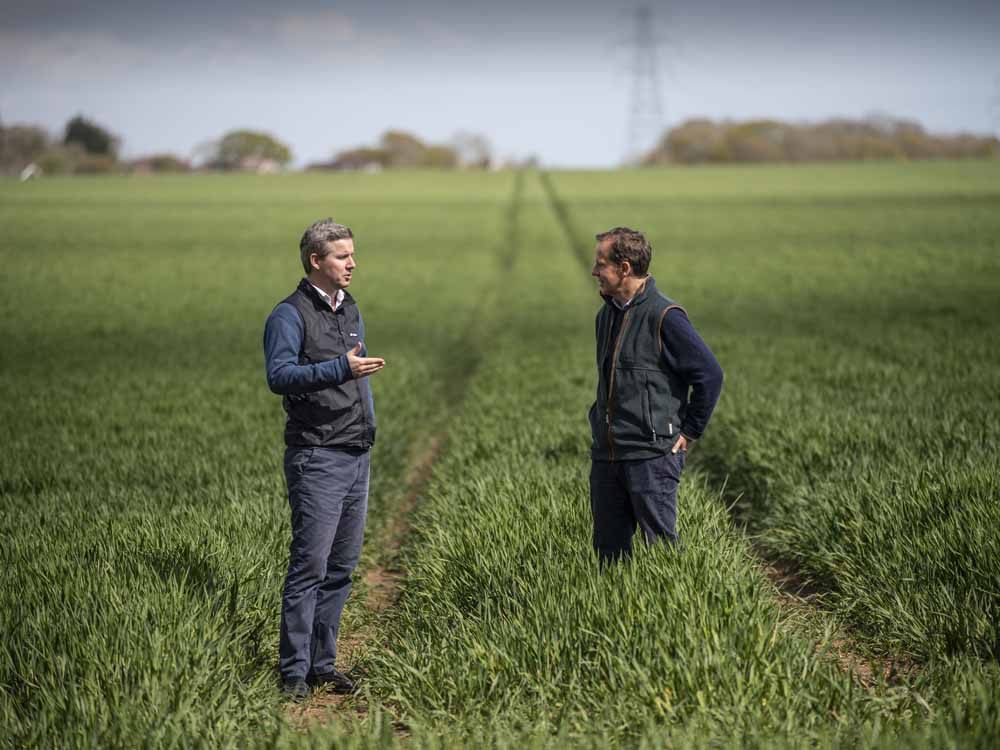An estate creates a new garden village in Hampshire
Knight Frank’s Head of Residential Development Research takes a trip to the south coast to learn more about a landowner-led development that puts quality, sustainability, community, the environment and liveability front and centre.
5 minutes to read
Hanging from the walls of the boardroom of the Southwick Estate office in north Hampshire are several portraits of the Thistlethwayte family, a visual reminder of the previous owners of the estate spanning many generations.
Two are copies of works originally painted by Thomas Gainsborough, the 18th-century portrait and landscape artist who was a founding member of the Royal Academy. The originals now hang in the Scottish National Academy.

This sense of history frames the conversation I’m here to have with Mark Thistlethwayte, current owner of the estate, which has been in his family for nearly 500 years, and Charlie Dugdale who leads Knight Frank’s Development Partnerships team.
Thistlethwayte is also chairman of Buckland Development, the master developer behind Welborne Garden Village, one of a growing number of landowner-led large-scale housing developments being planned across the country, using a long-term stewardship model that upends the traditional “build it, sell it, move on” economics of housebuilding.
“We are thinking in generational terms,” Thistlethwayte says as we stand in one of his fields, where the first of 6,000 new homes will be built from 2022. “It has taken us 15 years to get to this point, and once we start it will be a 25-year build period, so the whole process will have taken us 40 years.”
That’s a long time in a sector where success is traditionally measured by short-term results and a focus on housing delivery targets.
“Our approach [to development] has been to start with a clean sheet of paper and decide how we would like to build a community, and what we’d like that community to be in 50 or 100 years’ time,” explains Thistlethwayte, who was motivated to take matters into his own hands after observing the quality of other developments surrounding his estate, and the threat of a compulsory purchase order that would have seen him lose control of what was built.
It’s a view shared by Dugdale, who has been advising on the project at Welborne for six years. “Stewardship is fundamentally all about allowing landowners to participate in the development cycle by maintaining an interest and ensuring that the value of a site is maximised over the long term,” he says.

Long-term
In Welborne, Buckland’s role as a master developer will see it working in partnership with local and regional housebuilders, with strict but varied design guidelines. It is also committing to invest in and build the all-important social infrastructure itself, which includes on-site healthcare. The model has benefits for housebuilders too, who are able to avoid significant up-front land costs, while giving them the certainty and time to focus on what they do best – building houses.
“By bringing housebuilders into a partnership you create a longer-term relationship, perhaps over decades, which aligns the profit motive of all stakeholders from short- to long-term outcomes. That’s when good decisions start getting made that benefit the future community,” adds Dugdale.
There’s a lot to like in Welborne as a result. Once complete, it will be home to three primary schools, one secondary school, 20 nurseries, 13 playgrounds, 27 acres of sports facilities, 100,000 sq ft of retail space, 1.1 million sq ft of business space and 208 hectares of park and woodland.
A community trust will also be set up. Initial support – both in terms of cash and assets – will come from the estate, but in time it will be led exclusively by residents.
Ex-service personnel and homeless people will be offered the chance to learn new skills, build their own homes and find employment, including learning trades, on the development project as stonemasons, plumbers, plasterers or landscape gardeners.
A lot of the ideas shaping Welborne are not new. “We travelled all over the country – to Poundbury, Bournville, Letchworth Garden City and elsewhere – to try to work out what it is that works, what doesn’t work, and what it is that people value. We’ve unashamedly copied what we think is the best of the past and tried to put a 21st-century twist on it,” explains Thistlethwayte.
That involves a focus on sustainability and an aspiration to “future proof” the site. “We’re allowing for drones and for driverless cars,” Thistlethwayte continues. “We’ve brought in green energy. We’ve built a solar park that is live now and can power between 13,000 and 16,000 houses, and we’re getting rid of pylons. We’re using heat pumps, creating cycle routes and encouraging the consumption of local produce.”
That includes produce from across the wider Southwick Estate, ranging from ice cream from the estate’s own herd through to beer from the local brewery, thus helping to create a circular economy.
Focusing on the environmental aspect of the development also means that no off-site biodiversity offsetting measures will be required. “What we are building will be far more biodiverse than this field of wheat,” notes Thistlethwayte.

Patient capital
Of course, no project of this size is without hurdles. “What I’ve learnt from this – as well as patience – is that you need to be committed,” points out Thistlethwayte.
“Whether you like it or not there are going to be bumps in the road and you need to be sure from the word go that you’re not going to fall at the first. You either need the support early on to be able to take it the whole way through or to work with people that will be patient alongside you.”
More broadly, it sets up a wider debate about how we use land to deliver housing. On paper the stewardship delivery model fits with a raft of government policies around building beautiful and green development, though it’s likely that the timeframes involved jar with policymakers’ obsession with housing targets.
As a result, while the number of landowners adopting a stewardship approach to development is growing, it still isn’t nearly widespread enough. You need deep pockets to get over the road bump that is planning, while the current tax regime is uncertain and has numerous disincentives. Access to long-term finance is another constraint.
Together, it equates to a lot of time, investment and risk before a house has even been built.
“The government has been told countless times what to do,” comments Thistlethwayte.
“The answers are in the history of the most successful communities around the country. They know how to support stewardship and how to incentivise responsibility to the future, it’s just a question of whether they want to listen, of whether they want to encourage long termism or not.”